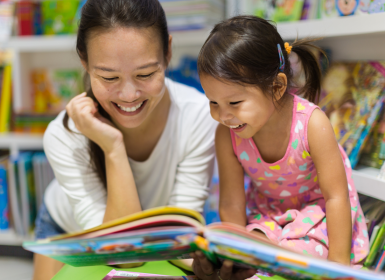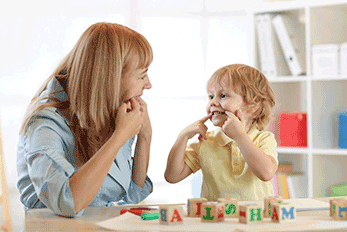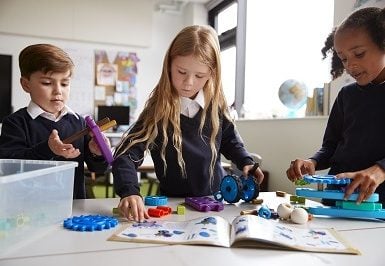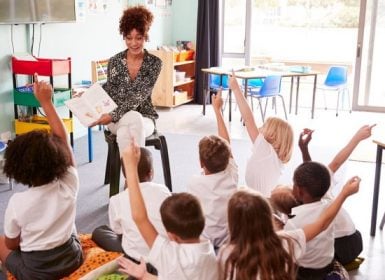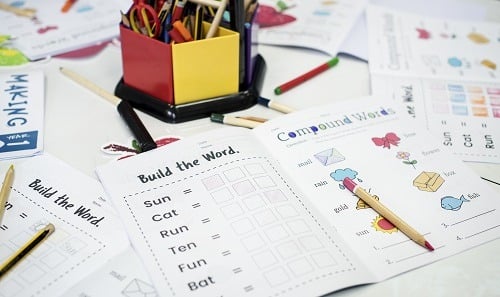
There are lots of ways to build your child’s vocabulary, and they don’t need to be complicated.
Vocabulary refers to the set of words that a child knows. Vocabulary can be split into two types: receptive vocabulary and expressive vocabulary. A child’s receptive vocabulary consists of the words the child understands when he/she hears or reads them. A child’s expressive vocabulary consists of the words the child uses when he/she speaks or writes.
Why is Vocabulary Important?
Vocabulary is the basis for learning language. Educational research shows that vocabulary strongly relates to reading comprehension, intelligence, and general ability.
As children learn to read, they must learn to decode (sound-out) print, but they also must have a vocabulary base (word knowledge) in order to make sense of what they decode.
By year 3, however, children are reading to learn, therefore it is important they have a robust vocabulary. For example, a child who is reading to learn about the Revolutionary War needs to know words like war, army, and horses (a basic vocabulary) to understand the history lesson. At the same time, however, the child will likely learn new words like artillery and revolution—continuing to build his/her vocabulary.
How Can You Help Build Your Child’s Vocabulary?
There are many things you can do to help your child increase both their receptive and expressive vocabulary, including:
- Explaining the meaning (definition) and function of new words (e.g. a ‘car’ is something that takes you somewhere; it is a type of transport)
- Use new words in context so a child understands how they can be used in a sentence (e.g. ‘the car I saw yesterday drove down the street’; ‘I drove my car to work this morning’)
- Discuss the different features of a new word (e.g. size, colour, shape, parts it has, etc). For example: ‘a banana is yellow in colour, curved in shape and firm to touch. It has a stalk and thick outer skin and is a type of fruit’)
- Discuss the different categories different items belong to (e.g. ‘a broccoli is a type of vegetable’)
- Discuss words that have similar meanings to the new word (e.g. ‘fast’ is another word for ‘quick’)
- Provide multiple repetitions of the new word and use it in different ways to help consolidate new vocabulary items.
Activities That Can Help With Building Vocabulary
Here are some simple activities that can build your child’s vocabulary:
- Read to your child or read with your child; expose your child to plenty of reading materials!
- Talk to your child about the environment around you (e.g. types of transport, foods, clothing, animals, etc.).
- Encourage your child to tell you about his or her day—what books he/she checked out at the library, who he/she sat by during lunch, something funny that happened at school, etc.
- Create a word wall at home where you can place new vocabulary items that your child is learning at school and discuss them.
- Incorporate new vocabulary into conversations with your child. Have them explain in their own words what the “new” words mean. Help them associate new words with other words that have similar meanings (synonyms) or that have opposite meanings (antonyms).

